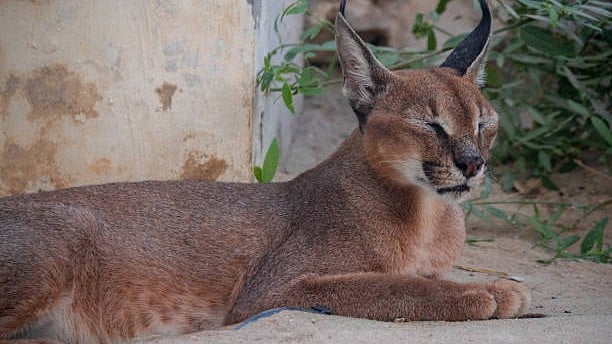
Representative image of an Asiatic Caracal.
Credit: iStock Photo
Mumbai: In a groundbreaking discovery, the elusive Asiatic Caracal has been spotted at Ramgarh in Jaisalmer in Rajasthan.
The rediscovery of Asiatic Caracal (Caracal caracal schmitzi) not only reaffirms the caracal’s presence in the Thar Desert but also highlights the urgent need to protect its fragile habitat from imminent threats, such as large-scale solar projects.
A dedicated grassroots expedition led by Sumer Singh Bhati, a nature enthusiast from Sanwata village in Jaisalmer, along with Pankaj Bishnoi, Community Engagement Officer at Bombay Natural History Society, which is headquartered in Mumbai.
“This is a big discovery,” said BNHS Director Kishor Rithe.
Once widespread across India’s grasslands, the caracal had nearly vanished from public consciousness.
This remarkable find is the result of months of diligent fieldwork, ancestral knowledge, and strong community engagement, where herders, local youth, and conservationists walked the dunes, tracked pugmarks, and revived hope for conservation.
More than just a scientific achievement, this story demonstrates the power of trust, tradition, and collective stewardship in preserving India’s disappearing wilderness.
“This was possible because of the dedicated grassroots community-led expedition,” said Sujit Narwade,Deputy Director, BNHS, who is Coordinator - Bustard and Florican Programme and Coordinator, Environment Information, Awareness, Capacity Building and Livelihood Programme (EIACP), Avian Ecology Center.
The caracal is a wild cat native to Africa, Middle East, Central Asia, arid areas of Pakistan and north-western India. It is characterised by a robust build, long legs, a short face, long tufted ears, relatively short tail, and long canine teeth.
According to the IUCN/SSC Cat Specialist Group, caracal is closely related to the African golden cat (Caracal aurata) and the serval (Leptailurus serval). In the past it was classified with Lynx and Felis but is not closely related to them.